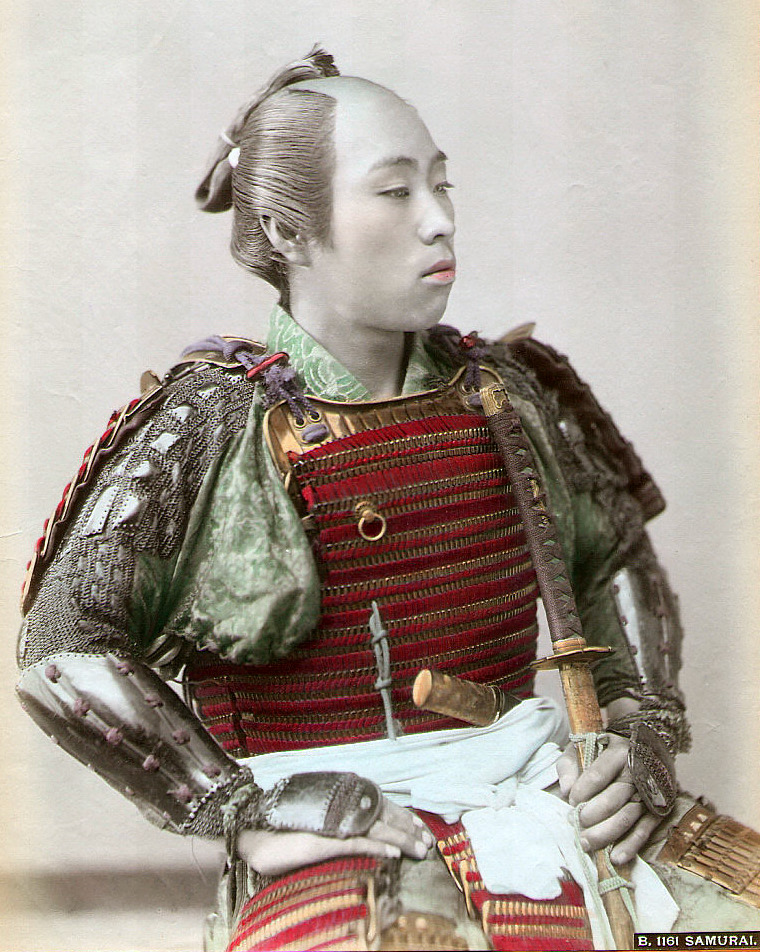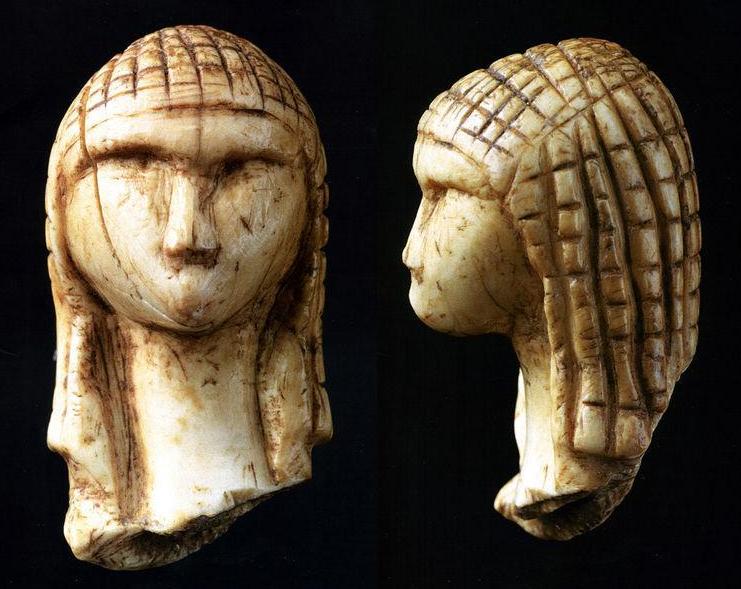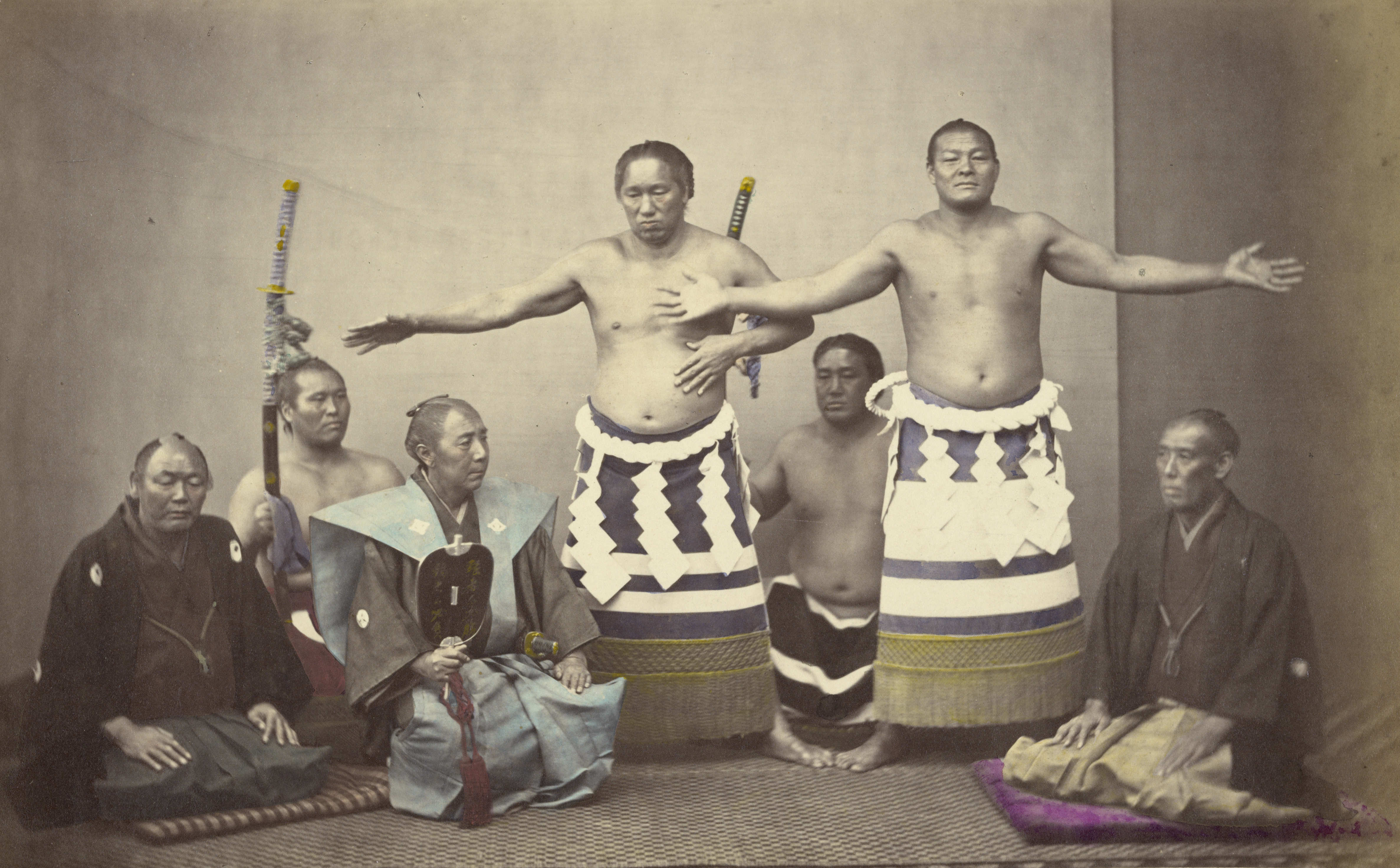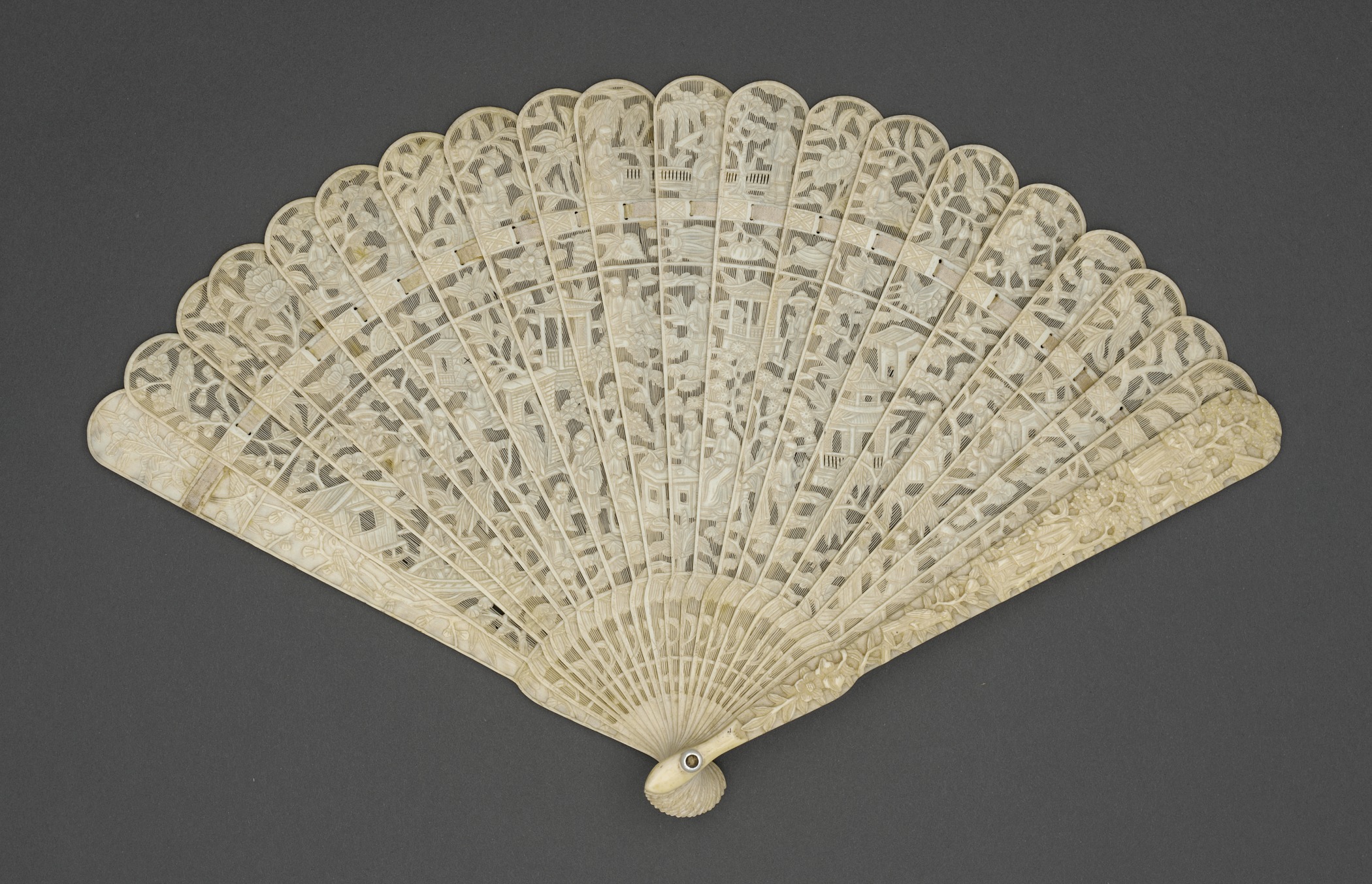|
Chon-mage
The is a type of traditional Japanese topknot haircut worn by men. It is most commonly associated with the Edo period (1603–1867) and samurai, and in recent times with sumo wrestlers. It was originally a method of using hair to hold a samurai kabuto helmet steady atop the head in battle, and became a status symbol among Japanese society. In a traditional Edo-period , the top of the head is shaved. The remaining hair was oiled and waxed before being tied into a small tail folded onto the top of the head in the characteristic topknot. History The origins of the can be traced back to the Heian period. During this period, aristocrats wore special cap like crowns as part of their official clothing. To secure the crown in place, the hair would be tied near the back of the head. Between the 1580s (towards the end of the Warring States period, 1467–1615) and the 1630s (the beginning of the Edo period, 1603–1867), Japanese cultural attitudes to men's hair shifted; where a fu ... [...More Info...] [...Related Items...] OR: [Wikipedia] [Google] [Baidu] |
Samurai Hand Colored C1890
were the hereditary military nobility and officer caste of medieval and early-modern Japan from the late 12th century until their abolition in 1876. They were the well-paid retainers of the ''daimyo'' (the great feudal landholders). They had high prestige and special privileges such as wearing two swords and ''Kiri-sute gomen'' (right to kill anyone of a lower class in certain situations). They cultivated the ''bushido'' codes of martial virtues, indifference to pain, and unflinching loyalty, engaging in many local battles. Though they had predecessors in earlier military and administrative officers, the samurai truly emerged during the Kamakura shogunate, ruling from 1185 to 1333. They became the ruling political class, with significant power but also significant responsibility. During the 13th century, the samurai proved themselves as adept warriors against the invading Mongols. During the peaceful Edo period (1603 to 1868), they became the stewards and chamberlains of the ... [...More Info...] [...Related Items...] OR: [Wikipedia] [Google] [Baidu] |
Kabuki
is a classical form of Japanese dance-drama. Kabuki theatre is known for its heavily-stylised performances, the often-glamorous costumes worn by performers, and for the elaborate make-up worn by some of its performers. Kabuki is thought to have originated in the very early Edo period, when founder Izumo no Okuni formed a female dance troupe who performed dances and light sketches in Kyoto. The art form later developed into its present all-male theatrical form after women were banned from performing in kabuki theatre in 1629. Kabuki developed throughout the late 17th century and reached its zenith in the mid-18th century. In 2005, kabuki theatre was proclaimed by UNESCO as an intangible heritage possessing outstanding universal value. In 2008, it was inscribed in the UNESCO Representative List of the Intangible Cultural Heritage of Humanity. Etymology The individual kanji that make up the word ''kabuki'' can be read as , , and . ''Kabuki'' is therefore sometimes tran ... [...More Info...] [...Related Items...] OR: [Wikipedia] [Google] [Baidu] |
Hairstyles
A hairstyle, hairdo, haircut or coiffure refers to the styling of hair, usually on the human scalp. Sometimes, this could also mean an editing of facial or body hair. The fashioning of hair can be considered an aspect of personal grooming, fashion, and cosmetics, although practical, cultural, and popular considerations also influence some hairstyles. The oldest known depiction of hair styling is hair braiding which dates back about 30,000 years. In history, women's hair was often elaborately and carefully dressed in special ways, though it was also often kept covered outside the home, especially for married women. From the time of the Roman Empire until the Middle Ages, most women grew their hair as long as it would naturally grow. Between the late 15th century and the 16th century, a very high hairline on the forehead was considered attractive. Around the same period, European men often wore their hair cropped no longer than shoulder-length. In the early 17th century, ... [...More Info...] [...Related Items...] OR: [Wikipedia] [Google] [Baidu] |
Sumo Terminology
is a form of competitive full-contact wrestling where a ''rikishi'' (wrestler) attempts to force his opponent out of a circular ring (''dohyō'') or into touching the ground with any body part other than the soles of his feet (usually by throwing, shoving or pushing him down). Sumo originated in Japan, the only country where it is practiced professionally and where it is considered the national sport. It is considered a ''gendai budō'', which refers to modern Japanese martial arts, but the sport has a history spanning many centuries. Many ancient traditions have been preserved in sumo, and even today the sport includes many ritual elements, such as the use of salt purification, from Shinto. Life as a wrestler is highly regimented, with rules regulated by the Japan Sumo Association. Most sumo wrestlers are required to live in communal sumo training stables, known in Japanese as '' heya'', where all aspects of their daily lives—from meals to their manner of dress—are dic ... [...More Info...] [...Related Items...] OR: [Wikipedia] [Google] [Baidu] |
Sikha
The ''sikha'' or ''shikha'' ( sa, शिखा; IAST: śikhā; "crest"; Hindi चोटी (choTi)) means flame, powerful, ray of light, peak of a mountain. It is a name of Hindu / Indian origin, and is commonly used for females. It also means long tuft, or lock of hair, left on top or on the back of the shaven head of a male Hindu. Though traditionally all Hindus were required to wear a śikhā, today it is seen mainly among Brahmins and temple priests. In West Bengal it is called Tiki. Hinduism The śikhā reportedly signifies one-pointed (''ekanta'') focus on a spiritual goal, and devotion to God. It is also an indication of cleanliness, as well as personal sacrifice to God. According to Smriti Shastras, it is mandatory for all Hindus to keep śikhā and the first three twice-born or dvija castes (brahmins, kshatriyas and vaishyas) to wear yajnopavita ( sacred thread), also called janeus, punool, or paita. It has been said that the śikhā allows God to pull one to heaven, or ... [...More Info...] [...Related Items...] OR: [Wikipedia] [Google] [Baidu] |
Queue (hairstyle)
A queue or cue is a hairstyle that was worn by the Jurchen and Manchu peoples of Manchuria, and was later required to be worn by male subjects of Qing China. Hair on top of the scalp is grown long and is often braided, while the front portion of the head is shaved. The distinctive hairstyle led to its wearers being targeted during anti-Chinese riots in Australia and the United States. The requirement that Han Chinese men and others under Manchu rule give up their traditional hairstyles and wear the queue was met with resistance, although opinions about the queue did change over time. Han women were never required to wear their hair in the traditional women's Manchu style, liangbatou, although that too was a symbol of Manchu identity. In the 18th century, both soldiers and sailors of western nations wore their hair pulled back into a queue, but the fashion was abandoned at the start of the next century. Predecessors and origin The Xianbei and Wuhuan were said to shave ... [...More Info...] [...Related Items...] OR: [Wikipedia] [Google] [Baidu] |
Khokhol
Oseledets ( uk, оселедець, p=ɔsɛˈl ɛdɛt͡sʲ, IPA: �sɛ'lɛdɛt͡sʲ, hohol in Russian or chub ( uk, чуб, translit=chub, p=t͡ɕup, IPA: ͡ɕup is a traditional Ukrainian style of haircut that features a long lock of hair left on the otherwise completely shaved head, commonly sprouting from the top or the front of an otherwise closely shaven head. Most commonly it is associated with the Ukrainian cossacks, although first mentions of the haircut go back to Sviatoslav I. A Russian name for oseledets, ''khokhol'', is commonly used as an ethnic slur for Ukrainians. History Halfshaven haircuts have been worn by the inhabitants of Ukraine since the early Middle Ages. The Viking rulers of Kyivan Rus imitated the traditional costume and hairstyles of their Slavic subjects. Many of these Russified Vikings joined the Varangian guard of the Roman Empire in Constantinople, and introduced the haircut to their comrades from Denmark. Subsequent generations of Vikin ... [...More Info...] [...Related Items...] OR: [Wikipedia] [Google] [Baidu] |
Hanfu
''Hanfu'' () is the traditional styles of clothing worn by the Han Chinese. There are several representative styles of ''hanfu'', such as the (an upper-body garment with a long outer skirt), the (an upper-body garment with a long underskirt), the and the , and the (an upper-body garment with Ku (trousers), ku trousers). Traditionally, ''hanfu'' consists of a Paofu, ''paofu'' robe, or a Ru (upper garment), ''ru'' jacket worn as the upper garment with a Qun, ''qun'' skirt commonly worn as the lower garment. In addition to clothing, hanfu also includes several forms of accessories, such as List of Hanfu headwear, headwear, Hanfu footwear, footwear, Hanfu accessories#Waist Ornaments, belts, Hanfu accessories#Jewellery, jewellery, and Hand fan, handheld fans. Nowadays, the hanfu is gaining recognition as the traditional clothing of the Han ethnic group, and has experienced a growing fashion revival among young Han Chinese people in China and in the overseas Chinese diaspora. ... [...More Info...] [...Related Items...] OR: [Wikipedia] [Google] [Baidu] |
Tokoyama
A is a hairdresser employed by the Japan Sumo Association to cut and prepare sumo wrestlers' hair, which is done in the style. The Sumo Association ranks them according to experience and ability and only the most senior are entitled to prepare the more ornate , or ginkgo leaf form of topknot, which -ranked wrestlers wear in their bouts and on other formal occasions. employ similar hairstyling techniques to those found in the construction of , and are expected to be on hand to fix the of sumo wrestlers during bouts. The term can also be used in its original form, which was for specialists who worked in hairstyling in kabuki. Ranks and training There are a total of about 50 employed by the Sumo Association, and as in sumo and most other Japanese disciplines, they are divided into ranks. Just as with , and most any other sumo-related job, each is attached to a sumo stable and has his own . All of the start with the kanji are the logographic Chinese characters tak ... [...More Info...] [...Related Items...] OR: [Wikipedia] [Google] [Baidu] |
Sumo Association
The is the body that operates and controls professional sumo wrestling (called ''Ōzumō'', 大相撲) in Japan under the jurisdiction of the Japanese Ministry of Education, Culture, Sports, Science and Technology (MEXT). ''Rikishi'' (active wrestlers), ''gyōji'' (referees), ''tokoyama'' (hairdressers), and ''yobidashi'' (ushers/handymen), are all on the Association's payroll, but the organisation is run entirely by ''toshiyori'' (elders). The organization has its headquarters in Yokoami, Sumida, Tokyo. History The precursor to a full-fledged organization began in the Edo period with sumo bouts that were often held to raise funds for new construction or repair of bridges, temples, shrines and other public buildings. ''Shōgun'' Tokugawa Ieyasu specifically, wanted "street" sumo prohibited and determined sumo should only be held for charitable purposes, and it was known as ''kanjin'' sumo. The wrestlers were also paid with extra revenue from these events. This is when the fi ... [...More Info...] [...Related Items...] OR: [Wikipedia] [Google] [Baidu] |
Hand Fan
A handheld fan, or simply hand fan, is any broad, flat surface that is waved back-and-forth to create an airflow. Generally, purpose-made handheld fans are folding fans, which are shaped like a sector of a circle and made of a thin material (such as paper or feathers) mounted on slats which revolve around a pivot so that it can be closed when not in use. Hand fans were used before mechanical fans were invented. On human skin, the airflow from handfans increases evaporation which has a cooling effect due to the latent heat of evaporation of water. It also increases heat convection by displacing the warmer air produced by body heat that surrounds the skin, which has an additional cooling effect, provided that the ambient air temperature is lower than the skin temperature – which is typically about . Fans are convenient to carry around, especially folding fans. Next to the folding fan, the rigid hand screen fan was also a highly decorative and desired object among the higher cl ... [...More Info...] [...Related Items...] OR: [Wikipedia] [Google] [Baidu] |
Ginkgo Biloba
''Ginkgo biloba'', commonly known as ginkgo or gingko ( ), also known as the maidenhair tree, is a species of tree native to China. It is the last living species in the order Ginkgoales, which first appeared over 290 million years ago. Fossils very similar to the living species, belonging to the genus '' Ginkgo'', extend back to the Middle Jurassic approximately 170 million years ago. The tree was cultivated early in human history and remains commonly planted. Ginkgo leaf extract is commonly used as a dietary supplement, but there is no scientific evidence that it supports human health or is effective against any disease. Etymology The genus name is regarded as a misspelling of the Japanese pronunciation ''gin kyo'' for the kanji 銀杏 meaning "silver apricot", which is found in Chinese herbology literature such as (Daily Use Materia Medica) (1329) and '' Compendium of Materia Medica'' published in 1578.T. Hori, A historical survey of Ginkgo biloba based on Japanese and C ... [...More Info...] [...Related Items...] OR: [Wikipedia] [Google] [Baidu] |









